
Earl of Derby is a title in the Peerage of England. The title was first adopted by Robert de Ferrers, 1st Earl of Derby, under a creation of 1139. It continued with the Ferrers family until the 6th Earl forfeited his property toward the end of the reign of Henry III and died in 1279. Most of the Ferrers property and the Derby title were then held by the family of Henry III. The title merged in the Crown upon Henry IV's accession to the throne in 1399.
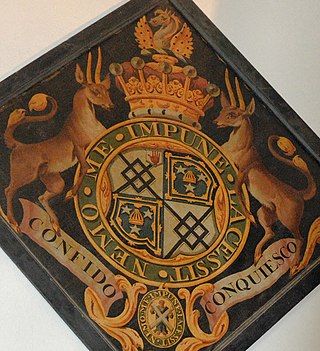
Earl of Dysart is a title in the Peerage of Scotland. It was created by King Charles I in 1643 for William Murray and has been held continuously since then by his relatives.

Earl of Bradford, of Bradford in the County of Salop, is a title that has been created twice, once in the Peerage of England and once in the Peerage of the United Kingdom. It was first created in 1694 for Francis Newport, 2nd Baron Newport. However, all the Newport titles became extinct on the death of the fourth Earl in 1762. The earldom was revived in 1815 for Orlando Bridgeman, 2nd Baron Bradford. The Bridgeman family had previously succeeded to the Newport estates.

Weston Park is a country house in Weston-under-Lizard, Staffordshire, England, set in more than 1,000 acres (400 ha) of park landscaped by Capability Brown. The park is located 10 miles (16 km) north-west of Wolverhampton, and 8 miles (13 km) east of Telford, close to the border with Shropshire. The 17th-century Hall is a Grade I listed building and several other features of the estate, such as the Orangery and the Stable block, are separately listed as Grade II.
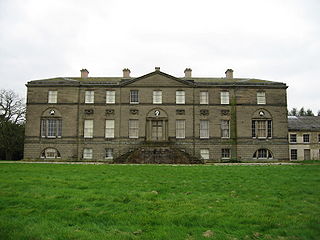
The Broughton, later Broughton-Delves, later Broughton Baronetcy, of Broughton in the County of Stafford, is a title in the Baronetage of England. It was created on 10 March 1661 for Sir Brian Broughton, of Broughton Hall, near Eccleshall, Staffordshire, High Sheriff of Staffordshire from 1660 to 1661 and the member of an ancient Staffordshire family.
There has been one creation of baronets with the surname Delves.

Three baronetcies have been created in the Baronetage of England for members of the Littleton or Lyttelton family. All three lines are descended from Thomas de Littleton, a noted 15th-century jurist. Despite differences in the spelling of the title, the names of all three lines were spelt in many varied ways in the early modern period, without distinction between the different branches of the family. This can be confusing, as the range of forenames in use was very limited.

There have been two baronetcies created for people with the surname Tollemache, or Talmash, one in the Baronetage of England and one in the Baronetage of Great Britain.
Sir Richard Grosvenor, 1st Baronet was an English politician who sat in the House of Commons at various times between 1621 and 1629. He is an ancestor of the modern day Dukes of Westminster.
The Worsley family is an English family that is derived from Sir Elias de Workesley, a Norman knight who was a youth at the time of the Norman conquest. He later accompanied Duke Robert II of Normandy on the First Crusade and was buried at Rhodes.

The Baker, later Rhodes, later Baker Wilbraham Baronetcy, of Loventor in the County of Devon, is a title in the Baronetage of Great Britain. It was created on 19 September 1776 for George Baker, Physician to George III and President of the Royal College of Physicians. His son, Sir Frederick Francis Baker, 2nd Baronet, FRS was accidentally killed by the vane of a windmill. The fourth Baronet, assumed in 1878 by Royal licence the surname of Rhodes in lieu of his patronymic. He never married and was succeeded by his younger brother, the fifth Baronet. He married Katharine Frances, daughter and heiress of General Sir Richard Wilbraham, nephew of Edward Bootle-Wilbraham, 1st Baron Skelmersdale. In 1900 he assumed by Royal licence the additional surname of Wilbraham. His son, the sixth Baronet, served as First Church Estates Commissioner, as Chancellor of the Dioceses of York, Truro, Chelmsford and Durham and as Vicar-General of the Provinces of York and Canterbury. On his death the title passed to his son, the seventh Baronet. He was High Sheriff of Cheshire in 1963 and also a deputy lieutenant of the county. In 1980 the title passed to his son, Sir Richard Baker Wilbraham, the eighth Baronet, who was Deputy Lieutenant of Cheshire in 1992. Following his death in 2022, he was succeeded Sir Randle Baker Wilbraham, the current 9th Baronet.

The Mostyn baronets are two lines of Welsh baronets holding baronetcies created in 1660 and 1670, both in the Baronetage of England. One creation is extant as of 2015. The two lines are related and both claim descent from Edwin of Tegeingl, an 11th-century lord of Tegeingl, a territory which approximates modern Flintshire.

There have been four baronetcies created for members of the ancient House of Beaumont, all in the Baronetage of England. All four creations are extinct or dormant.
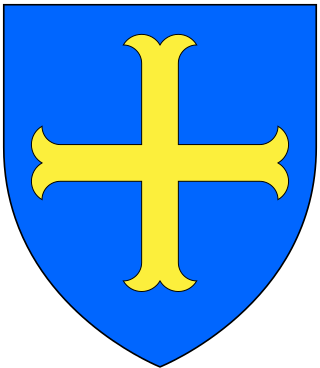
There have been three baronetcies created for descendants of the ancient Norman family of Molyneux who were granted extensive estates in Lancashire after the Norman Conquest.

The Baronetcy of Dukinfield of Dukinfield, Cheshire was created in the Baronetage of England on 16 June 1665 for Robert Dukinfield, son of Colonel Robert Dukinfield.
The Vernon family was a wealthy, prolific and widespread English family with 11th-century origins in Vernon, Normandy, France. Their extant titles include Baron Vernon and Vernon baronets of Shotwick Park.
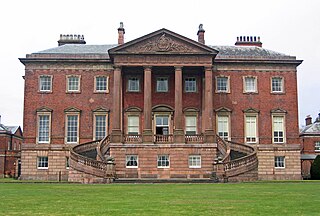
There have been two baronetcies created for persons with the surname Leicester, both in the Baronetage of England. The fifth Baronet of the second creation was raised to the peerage as Baron de Tabley in 1826. Both the barony and the two baronetcies are now extinct.

Sir Roger Wilbraham was a prominent English lawyer who served as Solicitor-General for Ireland under Elizabeth I and was judged one of her few really competent Law Officers. He held a number of positions at court under James I, including Master of Requests and surveyor of the Court of Wards and Liveries. He bought an estate at Dorfold in the parish of Acton, near his birthplace of Nantwich in Cheshire, and he was active in charitable works locally, including founding two sets of almshouses for impoverished men. He also founded almshouses in Monken Hadley, Middlesex, where he is buried.

Sir Thomas Myddelton, 2nd Baronet was a Welsh politician who sat in the House of Commons between 1679 and 1681.
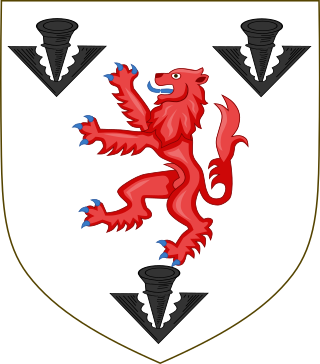
The Egerton family is a British aristocratic family. Over time, several members of the Egerton family were made Dukes, Earls, knights, baronets and peers. Hereditary titles held by the Egerton family include the dukedoms of Bridgewater (1720–1803) and Sutherland, as well as the earldoms of Bridgewater (1617–1829), Wilton (1801–1999) and Egerton (1897–1909). Several other members of the family have also risen to prominence. The Egerton family motto is Virtuti non armis fido.
















